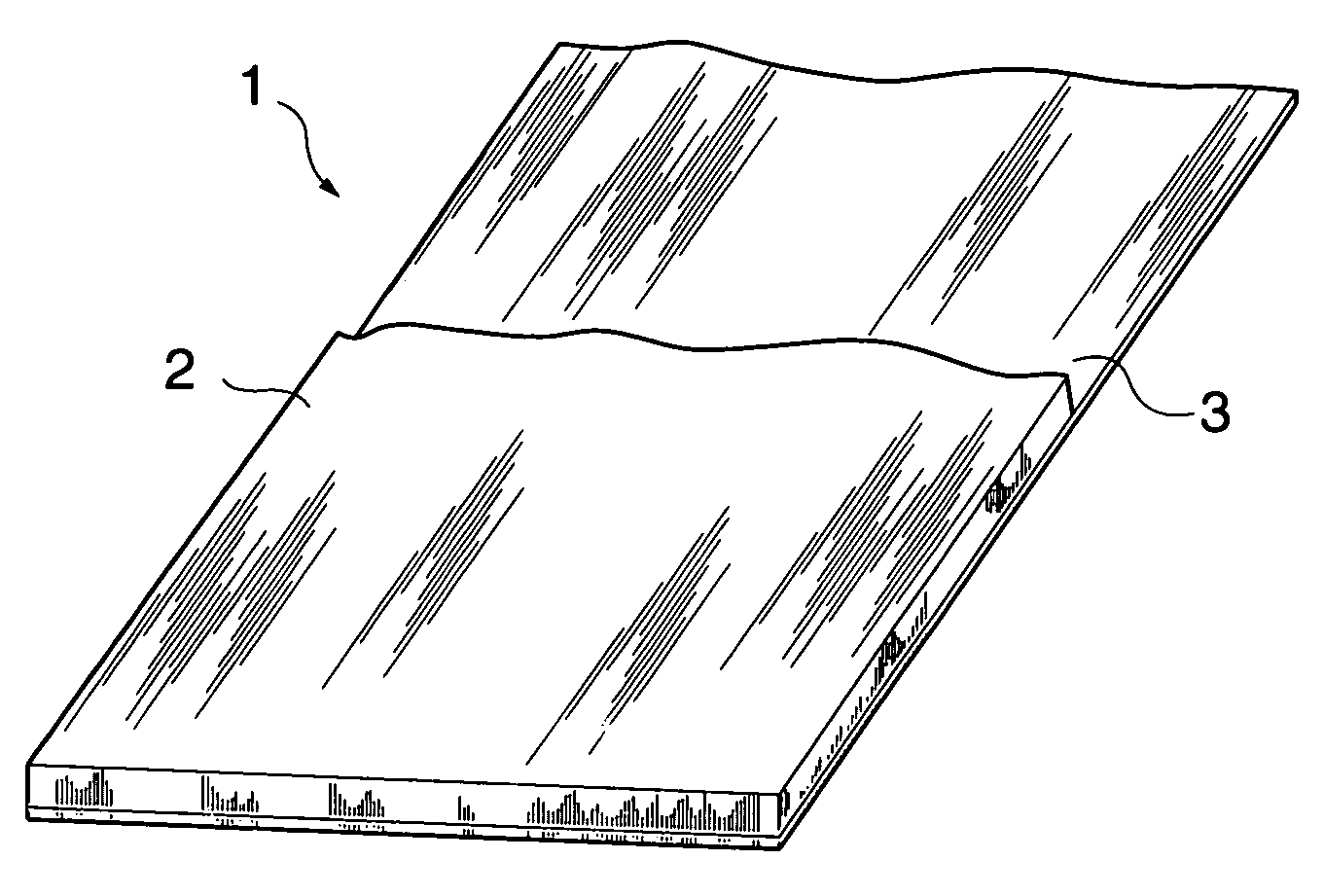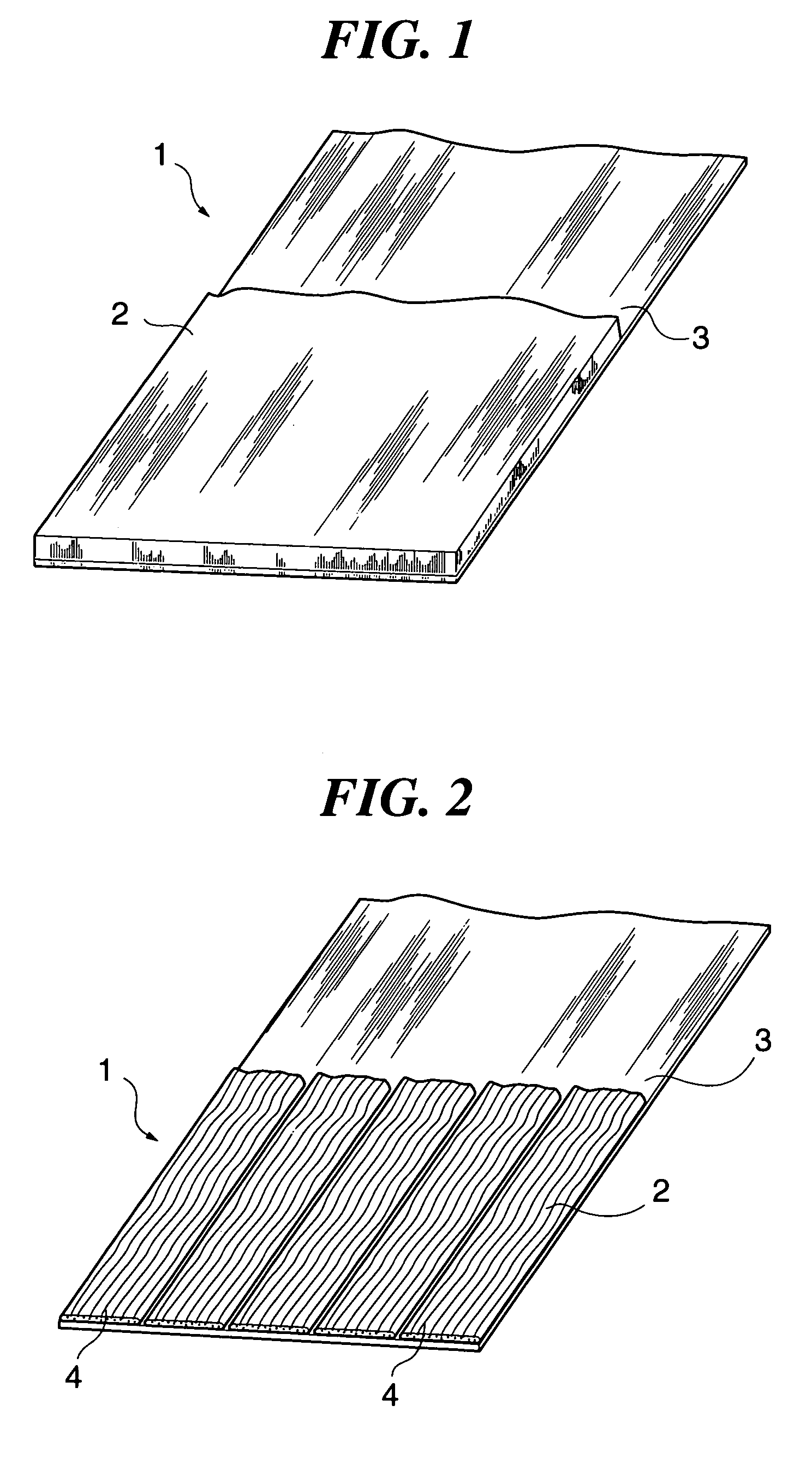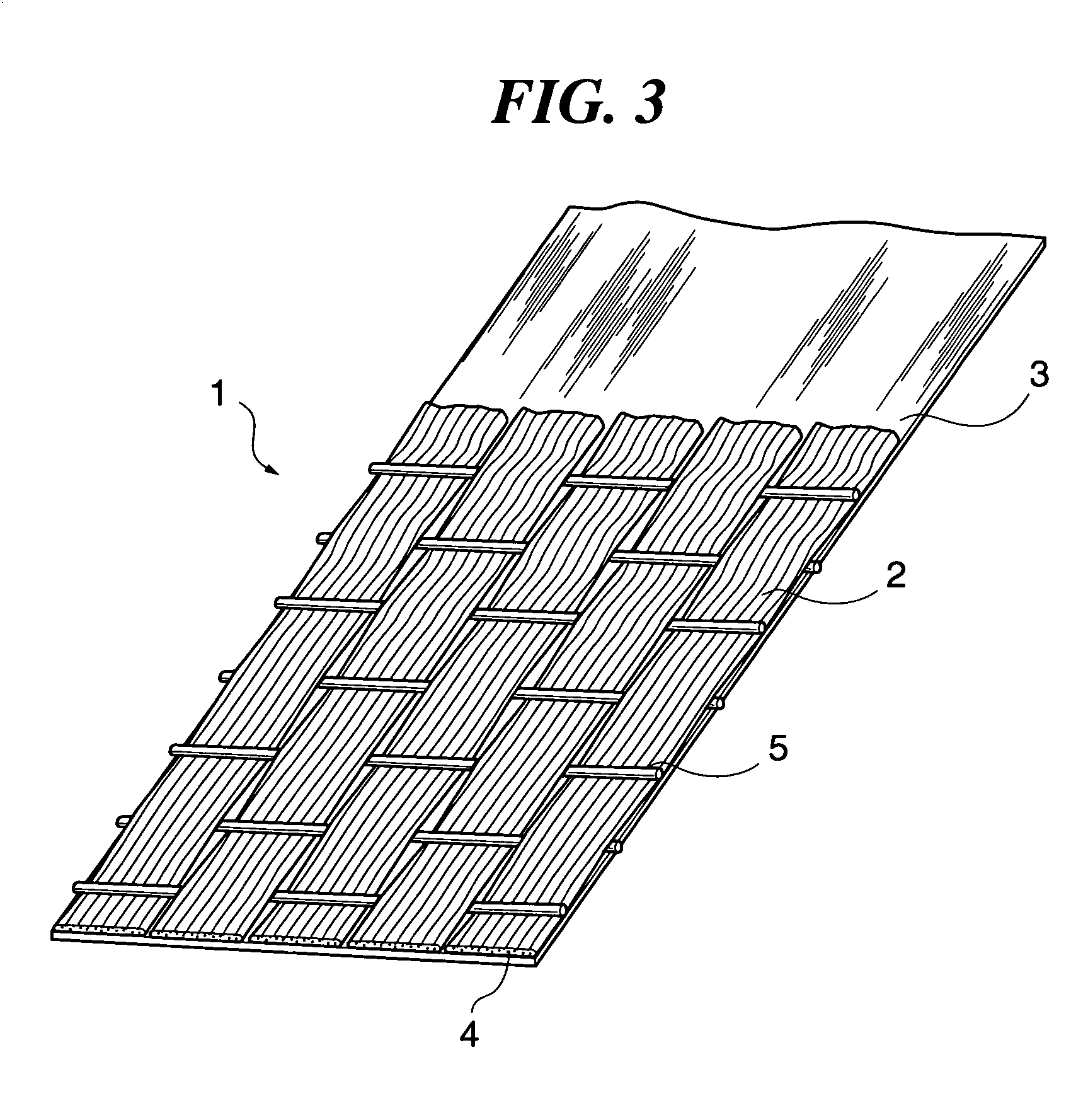Composite reinforcing fiber base material, preform and production method for fiber reinforced plastic
a technology of fiber reinforced plastics and base materials, applied in the direction of yarn, weaving, transportation and packaging, etc., can solve the problems of deterioration of the compression strength of the frp plate receiving, large anisotropy of mechanical properties, and rapid deterioration of mechanical properties in a direction deviating from the fiber axis, etc., to achieve excellent handling properties and impact resistance, excellent shaping properties and impact resistance, excellent impact resistance
- Summary
- Abstract
- Description
- Claims
- Application Information
AI Technical Summary
Benefits of technology
Problems solved by technology
Method used
Image
Examples
example 1
[0118]As a fiber reinforcing material, a bi-directional woven fabric was used, in which flat carbon fiber yarns used as warp yarns and weft yarns had a size of 8000 decitex, a tensile strength of 4800 MPa, an elasticity modulus of 230 GPa, a breaking elongation of 2.1%, and a number of filaments of 12,000, and the density of the warp yarns and the weft yarns was 1.25 yarns / cm, and weight per unit area of the fabric was 200 g / m2.
[0119]The cover factor of the woven fabric was as high as 99.7%.
[0120]The cover factor was determined as follows.
[0121]First, a stereoscopic microscope, for example, stereoscopic microscope SMZ-10-1 produced by Nikon Co., Ltd. was used for photographing the surface of the woven fabric while applying light to the back side of the fiber reinforcing material. As a result, a transmitted light pattern of the woven fabric was photographed, in which the weaving yarn portions were black, and the texture portions were white. The quantity of light was adjusted in a ran...
example 2
[0147]The same fiber reinforcing material and non-woven fabric as those used in Example 1 were integrated by needle punching, and pressure-bonded under heating to a temperature higher than the melting point of the low-melting-point nylon contained in the non-woven fabric by a hot roller to form an integrated material, followed by evaluation by the same method as Example 1. The results are summarized in Table 1.
[0148]Since the fiber reinforcing material and the non-woven fabric were integrated by needle punching and heat bonding, the handleability was excellent.
[0149]The fitting property was lower than Example 1, but was sufficient because the non-woven fabric contained a small amount of low-melting-point fibers.
[0150]The composite properties were also substantially the same level as Example 1, and the material of this example was excellent as a complex material.
example 3
[0151]The same fiber reinforcing material as that used in Example 1, and a spun bond type non-woven fabric having weight per unit area of 8 g / m2, and comprising 100% high-melting-point nylon having a melting point of 260° C. were used, and bonded by coating, to one side of the fiber reinforcing material, 2 g / m2 of a pressure sensitive adhesive composed of epoxy resin containing no curing agent and having a viscosity of 1.2 poise to form an integrated material. Evaluation was carried out by the same method as Example 1, and the results are summarized in Table 1.
[0152]Since the fiber reinforcing material and the non-woven fabric were integrated by bonding with a small amount of pressure sensitive adhesive, the shape was stable. In addition, deviation easily occurred between the fiber reinforcing material and the non-woven fabric, and the non-woven fabric had stretchability, thereby obtaining a material which could be easily fitted to a mold.
[0153]With respect to the composite properti...
PUM
| Property | Measurement | Unit |
|---|---|---|
| Length | aaaaa | aaaaa |
| Fraction | aaaaa | aaaaa |
| Percent by mass | aaaaa | aaaaa |
Abstract
Description
Claims
Application Information
 Login to View More
Login to View More - R&D
- Intellectual Property
- Life Sciences
- Materials
- Tech Scout
- Unparalleled Data Quality
- Higher Quality Content
- 60% Fewer Hallucinations
Browse by: Latest US Patents, China's latest patents, Technical Efficacy Thesaurus, Application Domain, Technology Topic, Popular Technical Reports.
© 2025 PatSnap. All rights reserved.Legal|Privacy policy|Modern Slavery Act Transparency Statement|Sitemap|About US| Contact US: help@patsnap.com



